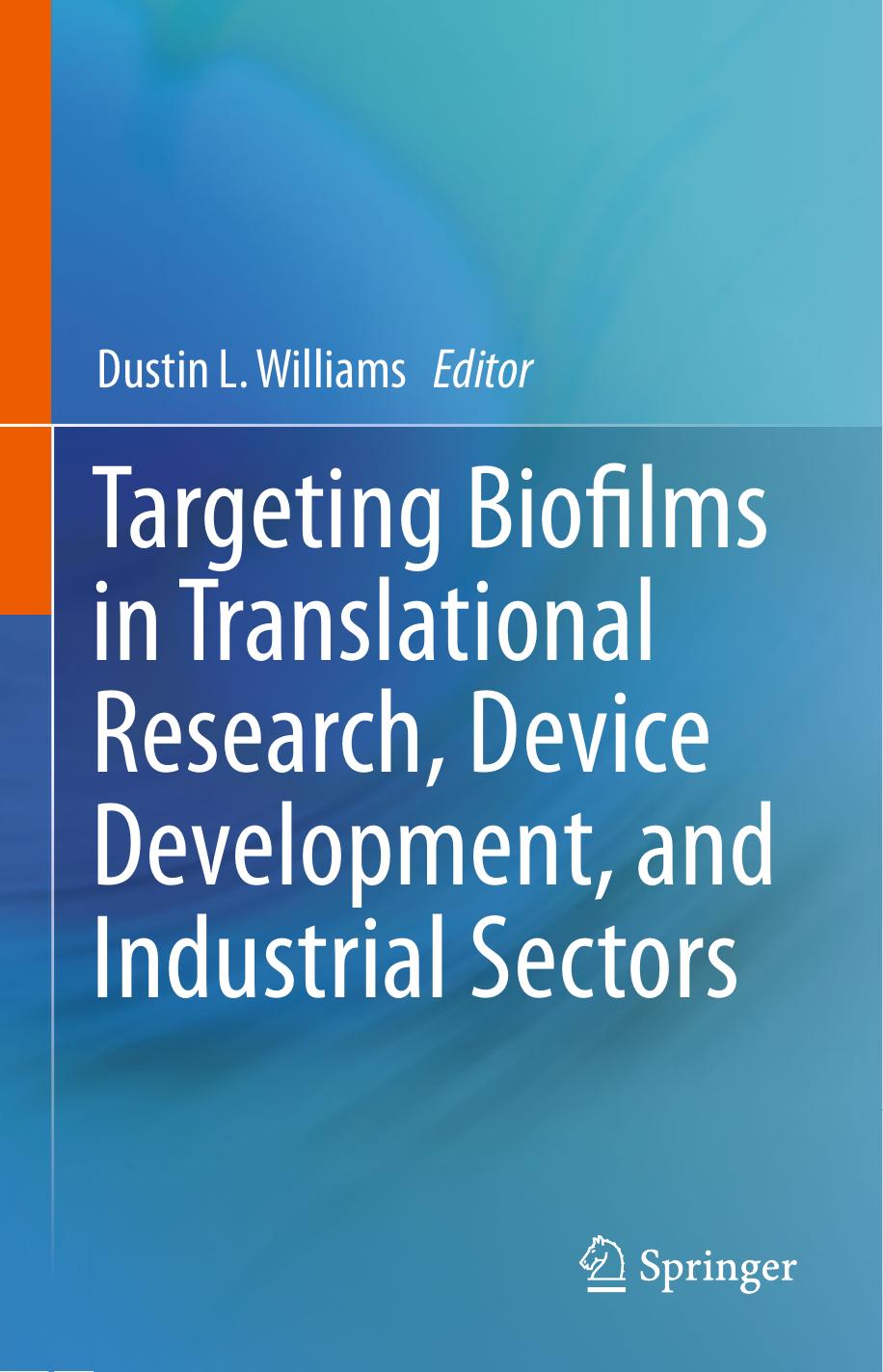Targeting Biofilms in Translational Research, Device Development, and Industrial Sectors by Dustin L. Williams

Author:Dustin L. Williams
Language: eng
Format: epub, pdf
ISBN: 9783030306670
Publisher: Springer International Publishing
Shockwave Treatment, Electromagnetic Fields, and Electrical Stimulation
Laser and ultrasound-generated shockwave treatment can use mechanical energy to breakup biofilms via disruption of bacterial adhesion. The disrupted biofilm then enables greater exposure of microbes to antibiotic treatments. Kizhner et al. found that around 98% of P. aeruginosa biofilms on metallic and plastic medical device surfaces could be removed with between 4 and 10 seconds of laser application. Laser-generated shockwaves were able to break up the biofilm layer into planktonic bacteria amenable to conventional treatment with antibiotics [77]. Similarly, in vivo studies examining 24 hours of continuous ultrasound treatment combined with administration of gentamicin acting on established E. coli biofilms demonstrated a significant reduction in viable bacteria [78].
Pulsed electromagnetic field (PEMF) application to bacterial biofilms has also demonstrated antibiofilm effects in vitro and has been found to augment antibiotic treatment efficacy. Pickering et al. applied PEMF to stainless steel pegs infected with biofilms of S. epidermis in combination with gentamicin. They reported a 50% reduction in the minimum biofilm inhibitory concentration needed for gentamicin and significant efficacy augmentation after PEMF application [79].
Electrical stimulation of orthopedic implant surfaces also holds promise as a method of biofilm disruption. Ercan et al. anodized and charged nanotubular titanium using15–30 volts of electrical stimulation. They found that S. aureus biofilm formation significantly decreased secondary to the formation of fluorine on the surfaces of the anodized titanium [80]. Likewise, electrical polarization of bioceramic hydroxyapatite resulted in a marked reduction in adhesion and proliferation of S. aureus and E. coli on the positively charged surface [81].
Download
Targeting Biofilms in Translational Research, Device Development, and Industrial Sectors by Dustin L. Williams.pdf
This site does not store any files on its server. We only index and link to content provided by other sites. Please contact the content providers to delete copyright contents if any and email us, we'll remove relevant links or contents immediately.
| Cell Biology | Developmental Biology |
| Entomology | Marine Biology |
| Microbiology | Molecular Biology |
| Biostatistics |
Sapiens: A Brief History of Humankind by Yuval Noah Harari(14248)
The Tidewater Tales by John Barth(12608)
Mastermind: How to Think Like Sherlock Holmes by Maria Konnikova(7223)
Do No Harm Stories of Life, Death and Brain Surgery by Henry Marsh(6887)
The Thirst by Nesbo Jo(6826)
Why We Sleep: Unlocking the Power of Sleep and Dreams by Matthew Walker(6618)
Life 3.0: Being Human in the Age of Artificial Intelligence by Tegmark Max(5474)
Sapiens by Yuval Noah Harari(5293)
The Longevity Diet by Valter Longo(5017)
The Body: A Guide for Occupants by Bill Bryson(4974)
The Rules Do Not Apply by Ariel Levy(4847)
The Immortal Life of Henrietta Lacks by Rebecca Skloot(4525)
Animal Frequency by Melissa Alvarez(4394)
Why We Sleep by Matthew Walker(4359)
The Hacking of the American Mind by Robert H. Lustig(4318)
Yoga Anatomy by Kaminoff Leslie(4303)
All Creatures Great and Small by James Herriot(4230)
Double Down (Diary of a Wimpy Kid Book 11) by Jeff Kinney(4204)
Barron's AP Biology by Goldberg M.S. Deborah T(4096)
